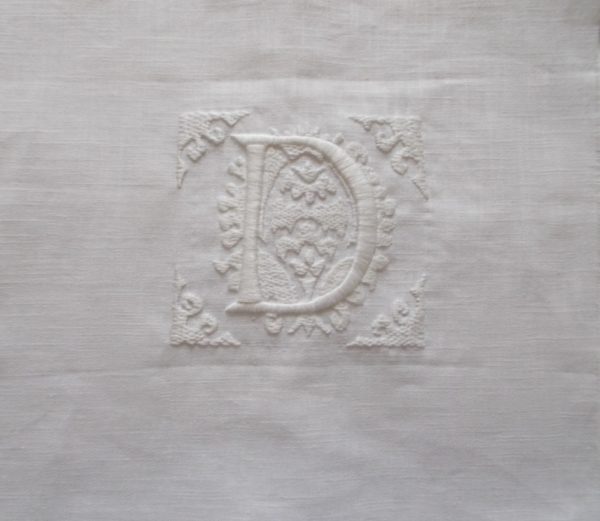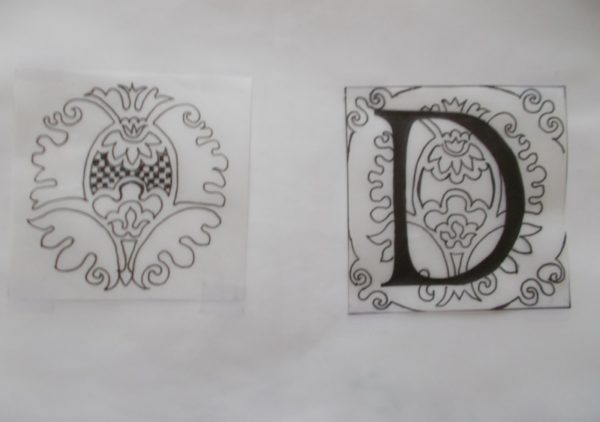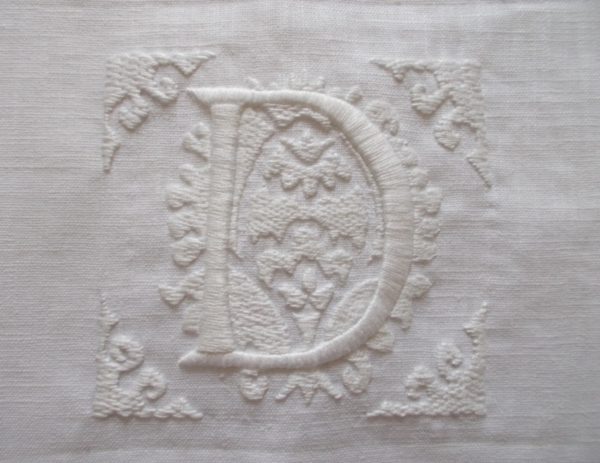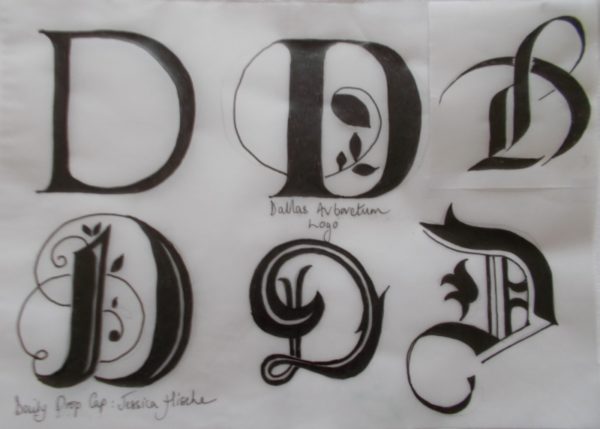
A whitework alphabet: letter D (hand embroidered by Mary Addison)
Damask and brocade are very similar in appearance, manufacture and origin, yet I love damask but don’t feel so amorous of brocade. This is probably because I find whitework very pleasurable and what is damask but woven whitework made on powered looms (using the Jacquard process) – think of all those heirloom tablecloths and napkins your mum and your gran loved and those acres of enormous cloths covering well set tables in English stately homes. Before my husband retired as priest in charge of 2 Oxford parishes, I used to haul my mother’s damask linen tablecloth(s) out for special occasions, knowing that life was changing and such tablecloths would get fewer outings in future. (The silver plated sugar bowl and hot water jug, also my mother’s, we used every Sunday and though not an especially sentimental person, I felt warm with the thought that she would have loved that I did this.) Nowadays few like the idea of washing or drying such giants of whiteness so the thought of inviting the inevitable tea or coffee stains acts as a severe inhibitor to use (though I always find a generous splodge of neat Ecover clothes washing liquid failproof, whether on a T shirt’s greasy stains or blood or wine on just about anything – as long as it’s of a size to go into the washing machine).

Damask design (based on Fortuny fabric)
So, that preamble is a long way round saying that I like damask so much that I enjoy trying to fake it – sometimes by appliquéing a slightly different shade of white or, in this case by using a simple backstitch in stranded embroidery cotton to emulate the weft of a loom (weFT are the threads running leFT to right, so warP are the uP and down threads.) The design of the motif for the damask is similar to a Fortuny brocade design (though as it’s one of his stencilled rather than woven designs, I take comfort in joining the great man in taking liberties).

A whitework alphabet: letter D (hand embroidered by Mary Addison)
Technically damask is a reversible figured fabric woven on a Jacquard loom with both threads the same colour, though subtlety different in appearance. The matt weft yarn forms the ground of the fabric, while the sateen warp yarn forms the pattern. Brocade is usually woven into the top of the fabric surface using contrasting threads, one of which may be metallic. Both damask and brocade are thought to have originated in China, whence they travelled the silk route to the Middle East where it is generally thought they attracted the eye of crusaders. Damask became damask as it was the cloth from Damascus, but more interestingly damask is the name of one of the five basic methods of weaving known to early Medieval Byzantine and Middle Eastern weavers, the rest being, tabby, twill, lampas and tapestry.
- Tabby is plain weave, used whenever you’re not thinking about what sort of weave you’re using.
- Twill has a pattern of diagonal parallel ribs as the weft is passed over one or more warp threads and then under two. Think cavalry twill trousers.
- Lampas is a fabric of luxury. The background weft is silk taffeta (taffeta comes from the Persian for twisted woven) but with four or more wefts laid on top to create the design; there may also be a brocading weft and metallic threads are often used.
- Tapestry is weft faced weaving, all the warp threads being hidden.
- Damask has a matt weft background with patterning in the sateen warp.

Sketches of various Ds found online
Now I need a visit to a factory making silk fabric to really sort out what’s going on with the lampas weave – words alone seem confusing and inadequate.
Happy to have been enlightened as to the different methods of weaving, which I’d never really given two thoughts to, and loving semi-obscure words in general, the terms flotsam and jetsam come swimming into my mind for here are two of another set of words, which we use everyday without thinking about what exactly they refer to. Flotsam, jetsam, lagan and derelict each refer to specific kind of shipwreck defined in Maritime Law. (I blame QI for this and even then I can never remember the last two!)
- Flotsam: part of wreckage of a ship and its cargo found floating in water;
- Jetsam: goods thrown overboard to lighten the load when the ship’s in difficulties (or when being chased by the Excise Men). Includes goods that sink to the sea bed where jettisoned or those washed ashore.
- Lagan: Goods cast overboard but attached to a buoy or some other indicator with the intention of them being collected later.
- Derelict: Goods cast overboard – either intentionally or forcibly – lying on the ocean floor with no hope of recovery.
This week’s post has been a diversionary tactic to take me away from my work tacking together the three layers of the altar frontal. Sized 3.30m (nearly 11 ft) by 2.60m (8.5 ft) and bigger than the available floor area in our living room (anyway my knees are no longer up to crawling around on floors), I have had to import a couple of craft tables (4 ft by 2ft each). These laid lengthwise with the dining table as backup behind mean the quilt is at least at a decent height but I’d forgotten just how much stretching across the tables employs arm muscles not in regular use. An eighth of the way through after half a day’s work, progress is slow… I can no longer put off today’s session.
For an appliqué in brocade style see this embroidered letter E here.

6 Comments
I’m glad we were able to give you some distraction – and so many interesting details! I knew about flotsam and jetsam, but lagan and derelict were new to me…!
Well, Rachel, thank you for saying my diversions were of interest. I must say I love these little discoveries – like you I knew only flotsam and jetsam, though had no idea they were legal terms.
You have certainly given us a great deal of information, in very readable form. Having in my long ago youth worked for marine insurance brokers, I was aware of the words pertaining to wreckage, but some of the weaving terms were new to me. My mother had an enormous damask tablecloth which looked and felt like silk. The others were cotton.
Good luck with basting the quilt. Mine works but it is not as done as well as the ones I’ve done on the floor.
Goodness, it is funny the things you discover people know, or don’t know about, isn’t it?!
I do hope you do use your mother’s cloths from time to time – it’s so sad tho think of damask tablecloths languishing in cupboards and drawers.
Against usual practice I baste wadding to the patchwork – which I have done. This weekend I’ll be adding the lining. Then, I can breathe a sigh of relief and get on with the nice bit of quilting. Wishes of good luck much appreciated.
These whitework letters are just lovely. Thank you for the weaving education!
Glad you like the whitework letters – using just one shade of thread is curiously satisfying.